How do you choose between the Altra Lone Peak and the Altra Superior?
They both look pretty similar; they’re both zero drop, and they’re only 4mm apart in stack height.
Well, I’m here to help!
At the end of this post, I’m also giving my super simple formula to help you decide which shoe is for you!
What’s Different about Altra’s?
Super quick
If you’re new to Altra, it’s worth noting two specific (and unique) elements that set Altra apart.
- All Altra shoes are zero-drop, meaning your heel and your forefoot sit at the exact same height from the ground. That’s not true of most other shoes on the market.
- Altra also makes all of their shoes with plenty of room in the toe box. If you’ve never ventured into “foot-shaped” running shoes, you’re in for a freeing treat!
That’s it for the general factors of the Altra shoe line, so let’s break down the details of both the Altra Lone Peak and the Altra Superior.
Disclaimer: By clicking through the links on this page and purchasing the products, you’ll be helping me out. This is done because I receive a kickback from the sellers at no extra cost to you! I thank you so much for helping me continue with the website!
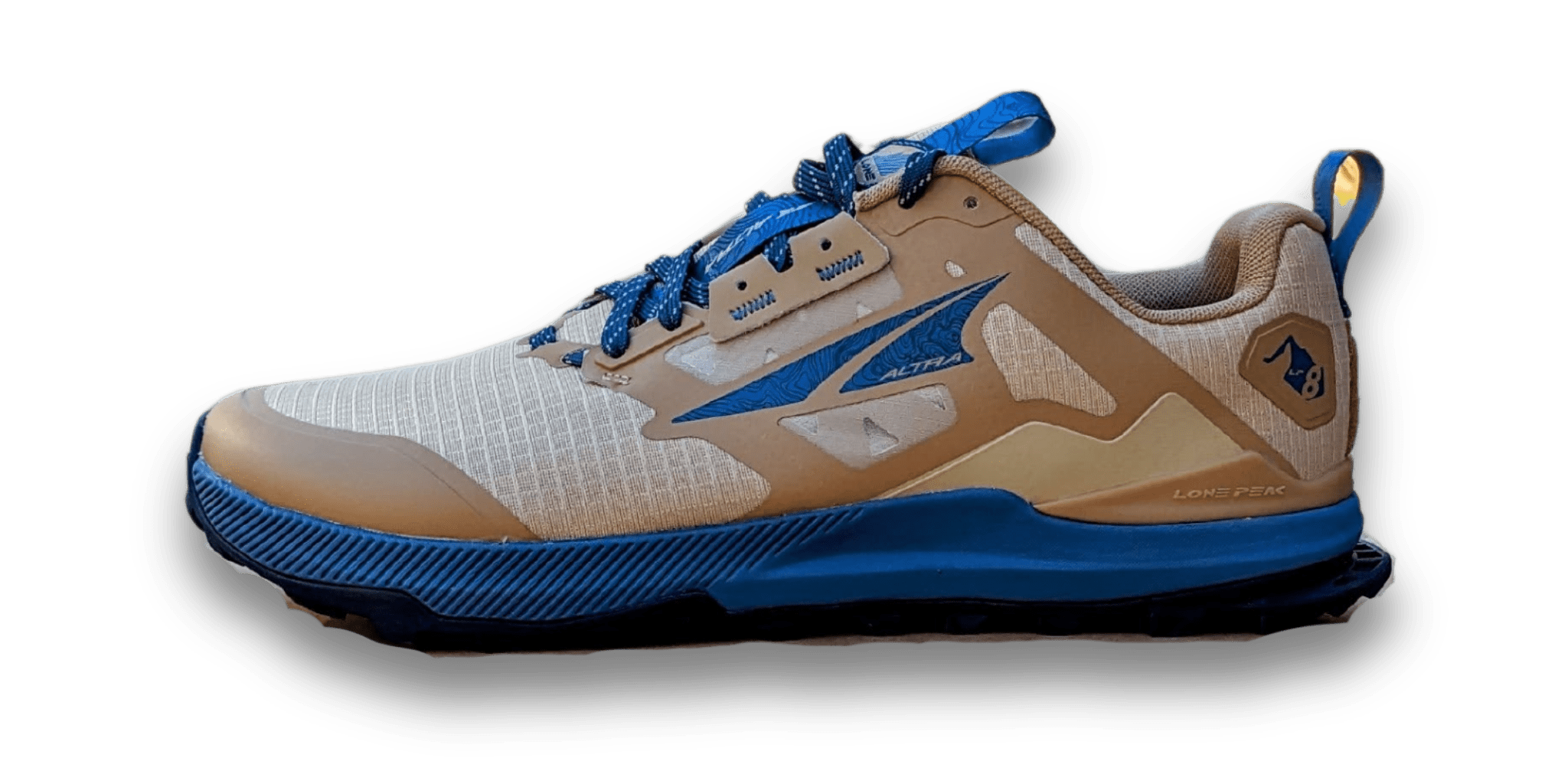
Altra Lone Peak
Cushioned but still nimble for those mid to long-distance races
$150
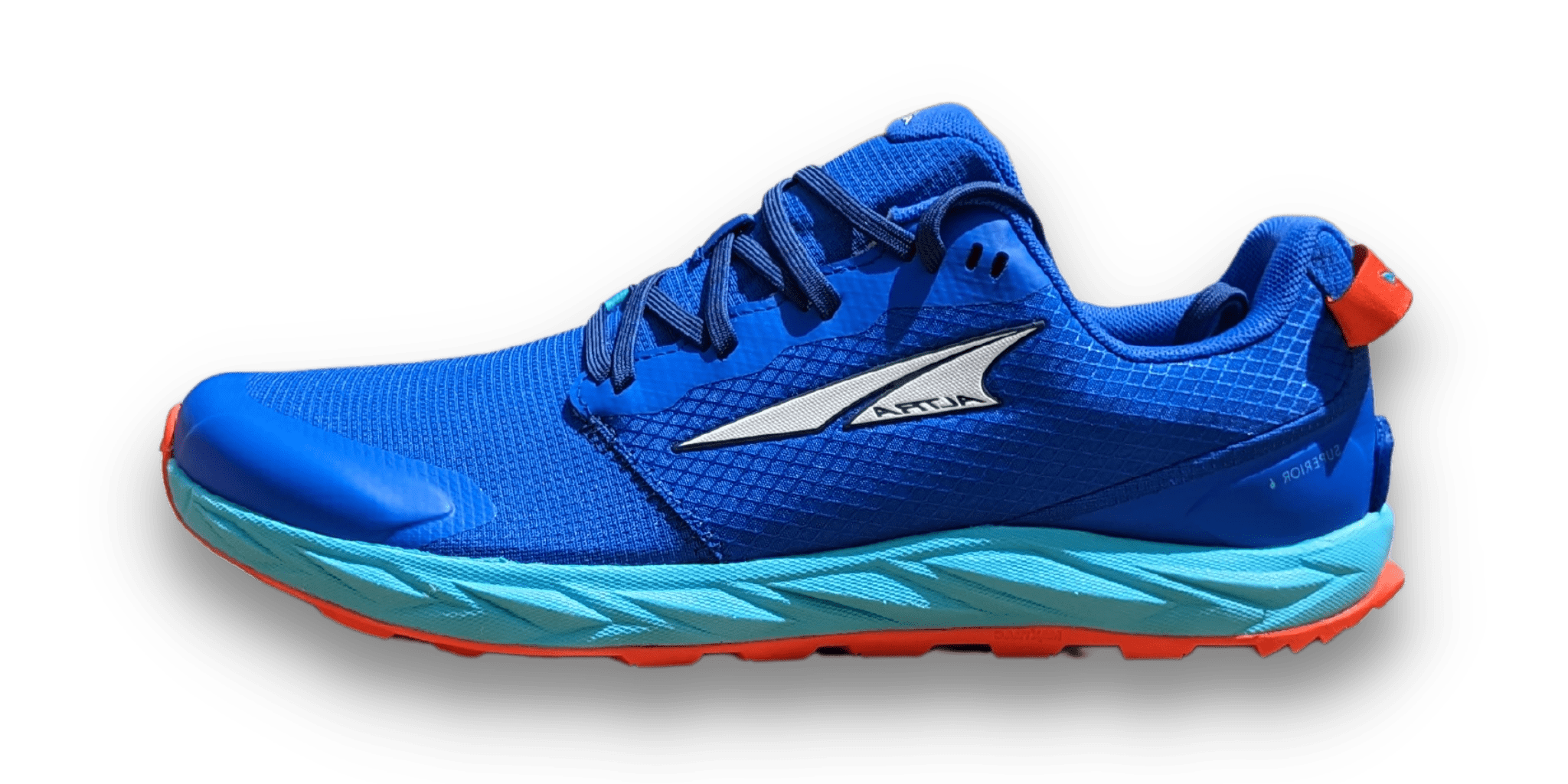
Altra Superior
Light, agile, and unobtrusive short-distance race shoe
$140
The Altra Lone Peak is the OG of the Altra lineup. Every trail runner (and a few non-trail runners) heard the hype about these unique shoes and was desperate to try them.
Originally, they were wide, squishy, and had a slipper-like feel –not something anyone had seen in the running market before. A shoe where your heel is the same height as your forefoot, but still, offers cushion? You were either a trail runner who loved them or hated them!
Which Altra Shoe is for you?
Take a quick 4-question quiz to identify the perfect Altra running shoe for your feet! You'll get both road and trail options based on your answers!
Version 8 of the Lone Peak is still a throwback to those early days, but lucky for us, they’ve matured to offer more longevity and a well-rounded midsole.
No more bulky heel cushioning and cheap uppers. Instead, the upper now supports overlay protection in all the right areas and the trimmed-down heel pairs comfort with precision. The fit of the heel on the Superior and the new Lone Peak is very similar.
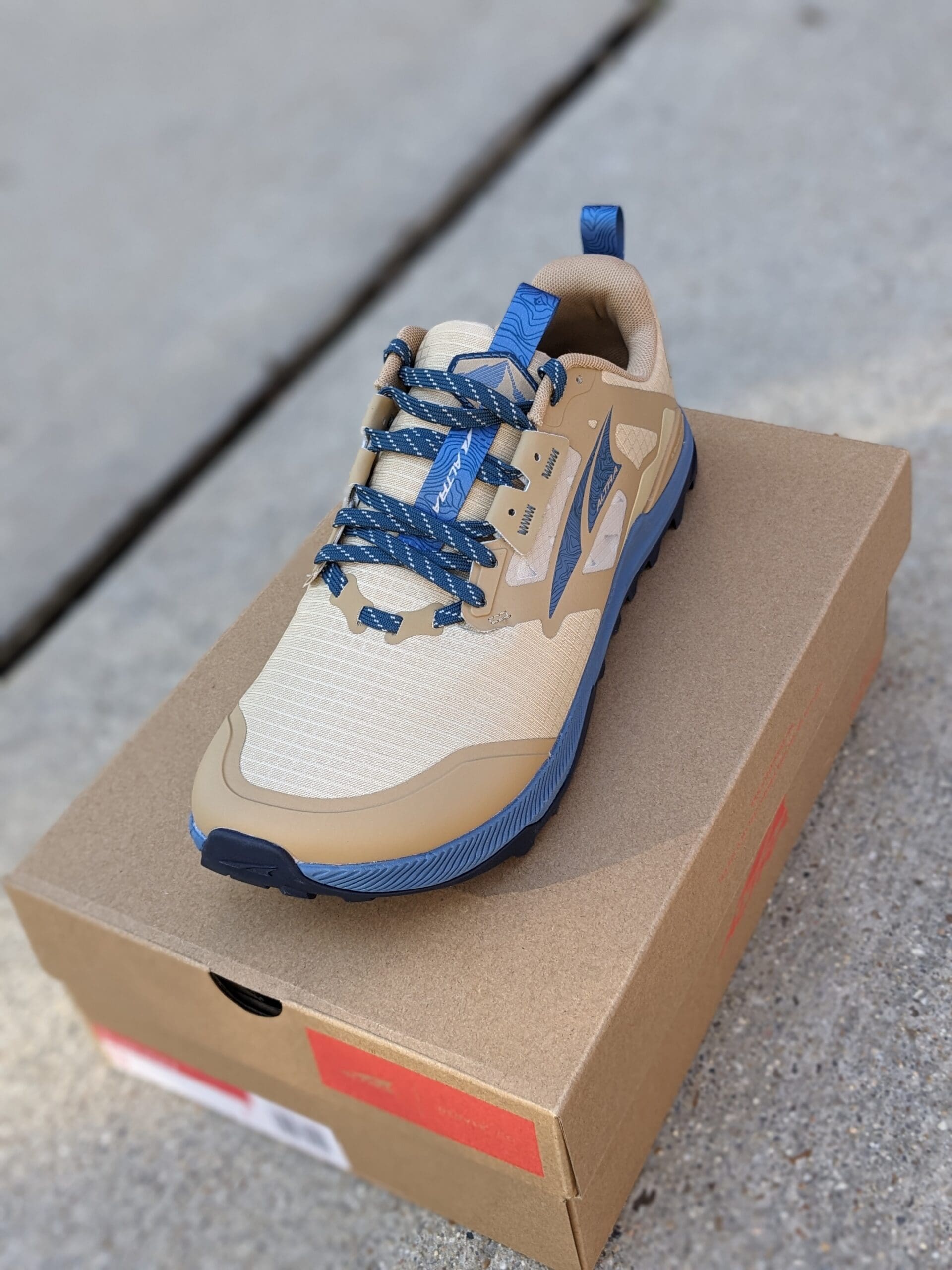
The Altra Lone Peak is a great shoe if you have especially wide or voluminous feet.
The vast amount of space around the toes will give you room to splay and promote a more barefoot-like movement, and while the Superior is wide, it lacks the volume of the Lone Peak.
If you have wide feet, the Altra Lone Peak’s are likely the best shoes for you because they have a wide option which is even more forgiving than their standard version.
With a gentle balance between responsiveness and cushion, the ErgoMax is built for long distances and keeps its form for 100’s of miles. That extra 4mm of cushioning the Lone Peak has over the Superior makes a big difference on a long run. You’ll sacrifice a little ground feedback, so it is a balance between feel, and performance.
On more technical trails, I often find the reduction in ground feel unnerving, wishing I had my Superiors on instead.
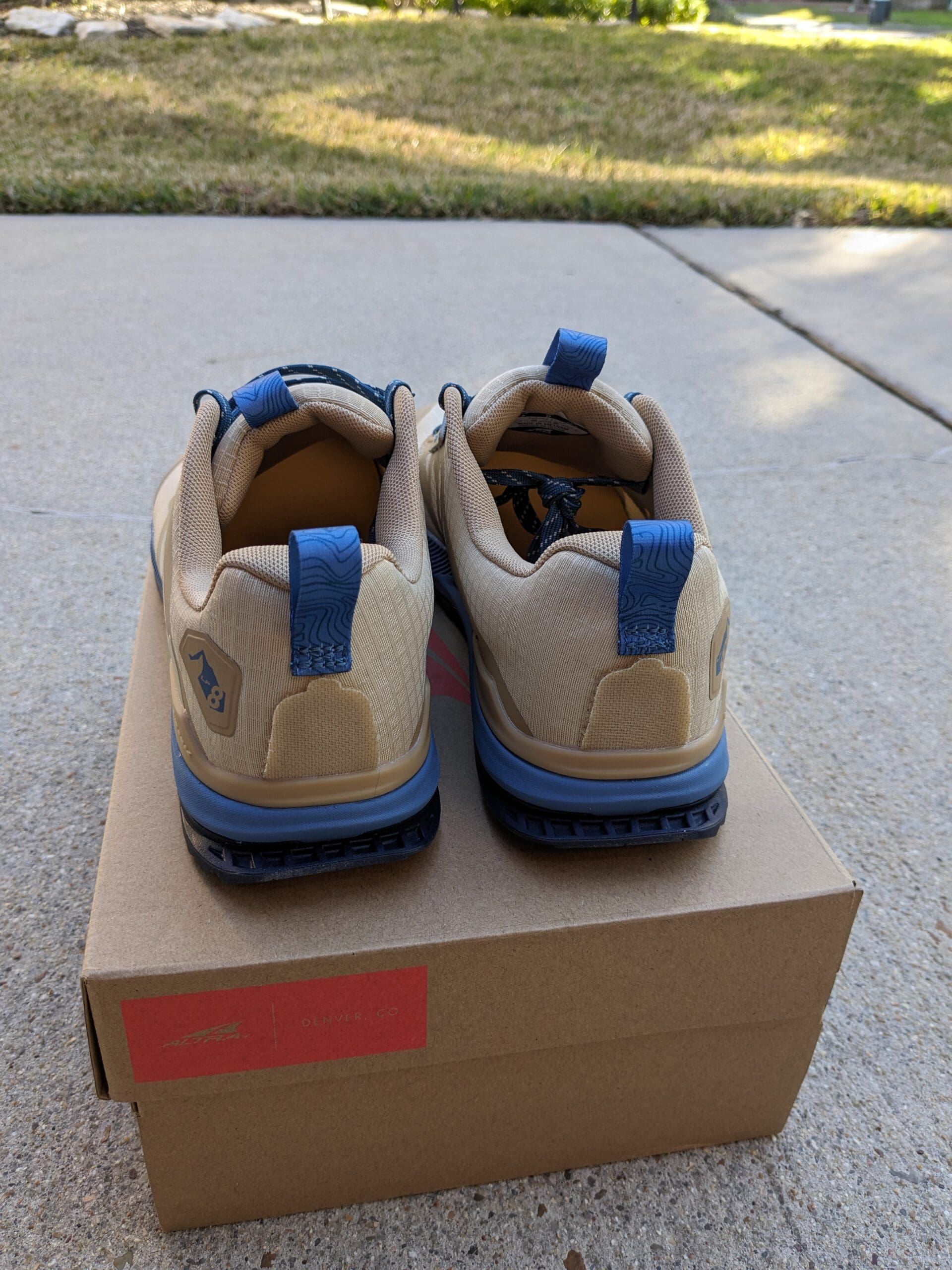
The Lone Peak heel can feel a bit sloppy at times. The heel counter is small and unobtrusive, remaining flexible for a good fit, but that fit can feel somewhat sloppy. I find the Superior has a better fitting heel, and anyone with a more narrow, smaller heel should consider the Superior first.
The MaxTrac outsole covers the whole sole! The outsole was the big update in versions 7 & 8; with a deep, multi-directional chevron design, the grip is not an issue. But I feel it may come up short on the longevity test. The rubber used is reasonably soft and tacky, and in the past, rubbers like this have worn very fast for me.
For a full breakdown review of the Altra Lone Peak 8, check out my full review.

Altra Lone Peak 8
The most minimal offering Altra currently has in the trail lineup –and little has changed since its first inception.
The Altra Superior has a flat, nimble, comfortable shell for your foot with a little cushioning. If you’re looking for a fast-flying race shoe with enough ground feel to keep you dancing over rocks, this lightweight option is a top choice.
The Superior has an oddly soft midsole, considering it’s a lower stack height, but it still maintains a great ground feel. The tactile feedback helps you adjust when running on uneven terrain with a ton of ground feel –but with ground feel comes drawbacks. Sometimes, those rocks can be sharp, so the shock of them is something that you may have to get used to. Just remember it can take around 20km to break into your Superiors. If you can’t deal with feeling the ground, jump back to the Lone Peak.
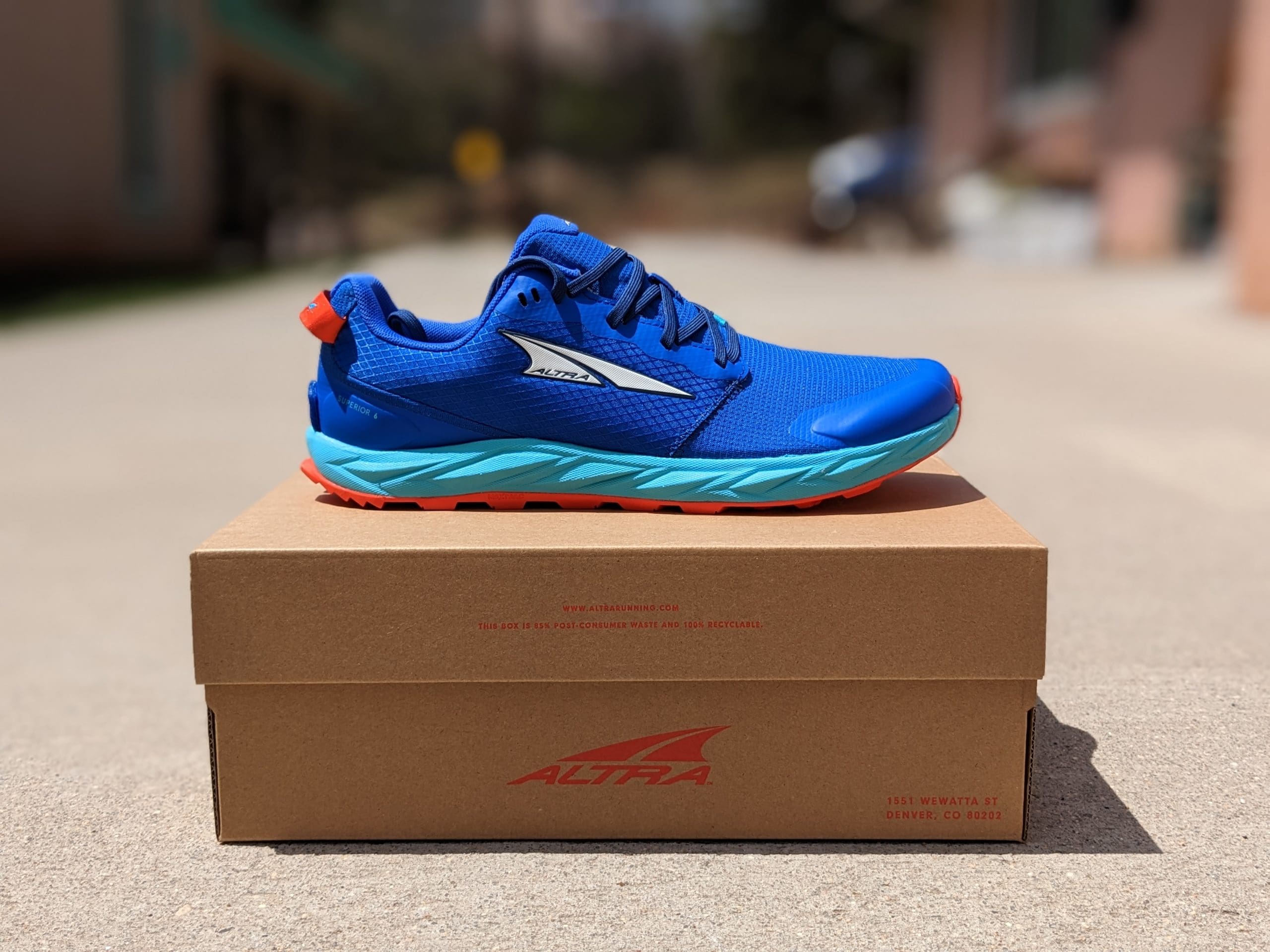
Soft, lightweight, and thin, the comfortable upper could be a point of breakdown. If you have a fight with a sharp rock, the rock will win. You’ll likely rip through the upper material because it’s soft and flexible fabric. It’s unlikely, but if you’re worried about longevity, try out the Lone Peak first.
The burrito-style tongue isn’t really a tongue. There are plenty of poorly designed tongues out there, and this isn’t one of them. Altra has got around the tongue slipping issue by completely attaching one side! And the other side is even semi-attached with a gusset, so you’re unlikely to have issues with rocks in the shoe. It’s not for everyone, but I for one, am a fan.
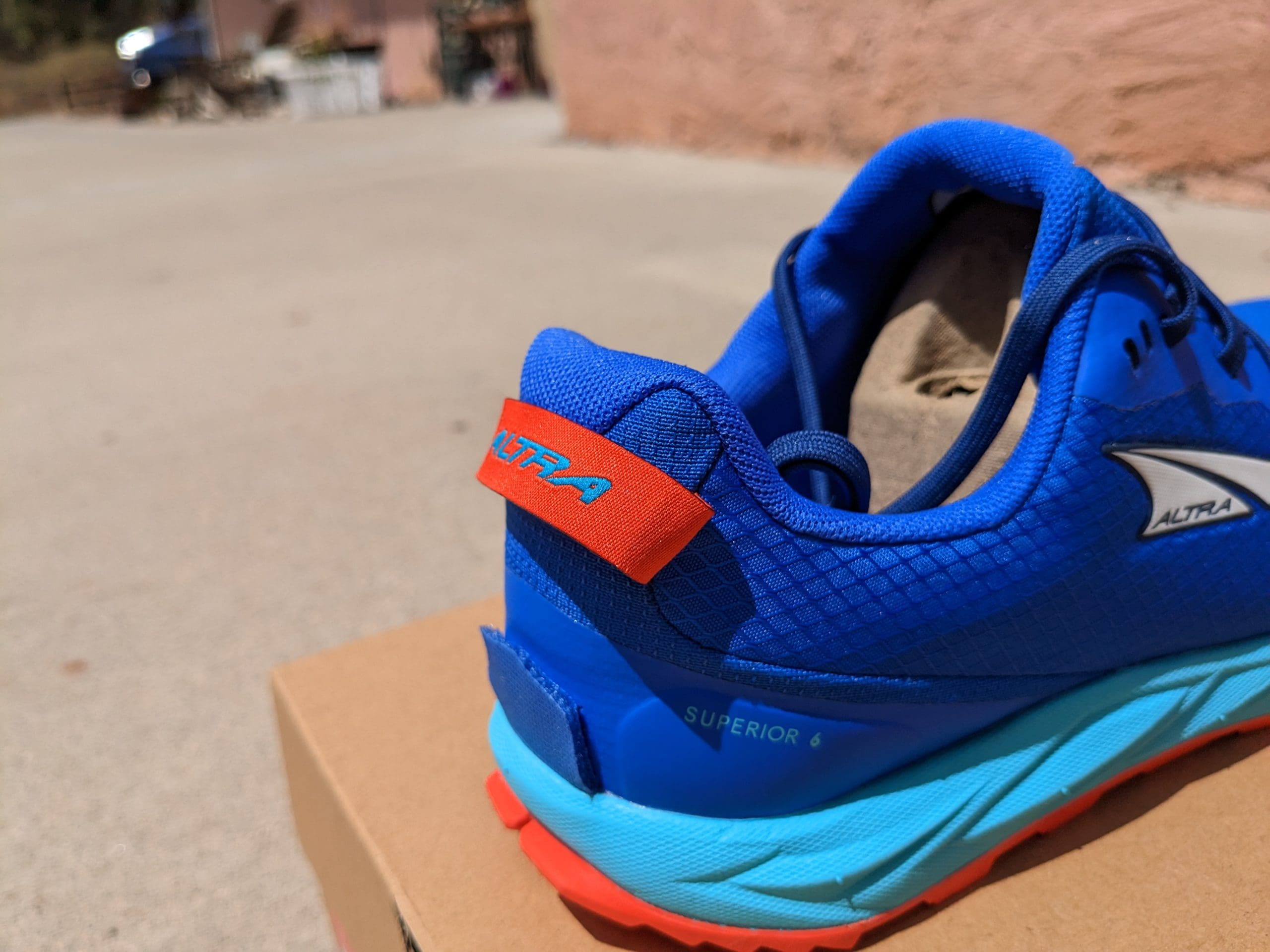
A similar fitting heel to the Lone Peak, if not a little narrower. Even though the lacing looks a little strange with material loops on one side and eyelets on the other, the upper eyelets still offer the option of a lace lock, keeping that heel firmly in place.
The design of the outsole differs from the Lone Peak, but again it falls short. The outsole on the Superior is still decent, but not outstanding. The MaxTrac rubber has held up “ok” to +300km of abuse, and the level of grip is good enough. Considering the Superior is not trying to win the award of the best grip on the trail running scene, I’m happy with where it’s at.
Again, it has a wide toe box, but where’s the volume at? Yes, you can spread your toes out, and the upper is very forgiving to oddly shaped feet, but strangely, I found my toenails pressed on the top of the shoe. In the end, I swapped out the insole for a thin Inov8 pair, and that solved the issue. If you’re desperate for lots of toe volume, stick with the Lone Peak.
For a full breakdown review of the Altra Superior 6, check out my full review.

Altra Superior 6
These are both Altra shoes, so they’re going to be similar” zero drop shoes with a wider fit. But they serve a slightly different audience.
Differences
Looking at a side-by-side comparison of the shoes highlights the differences fairly quickly. It all comes down to size and bulk.
Cushion
Can 4mm’s really make a difference? That’s right; the Lone Peak only has 4mm more cushion than the Superior. That sounds like nothing, but it’s a world of difference on a run.
If you like to feel the ground like I do, you need to strike a balance between enough cushion to take the edge off sharp rocks and less cushioning so you can feel the ground’s contours.
The Altra Lone Peak is said to have ground feel, but if I were being truthful, I think that’s not all true. The Superior has “some” ground feel, but it’s still difficult for your brain to perceive the textures beneath your feet.
That’s why I opt for the Superiors on steep, technical, rocky terrain and switch to thin, minimal trail shoes like the Xero Shoes Mesa Trail II on buffed-out trails.
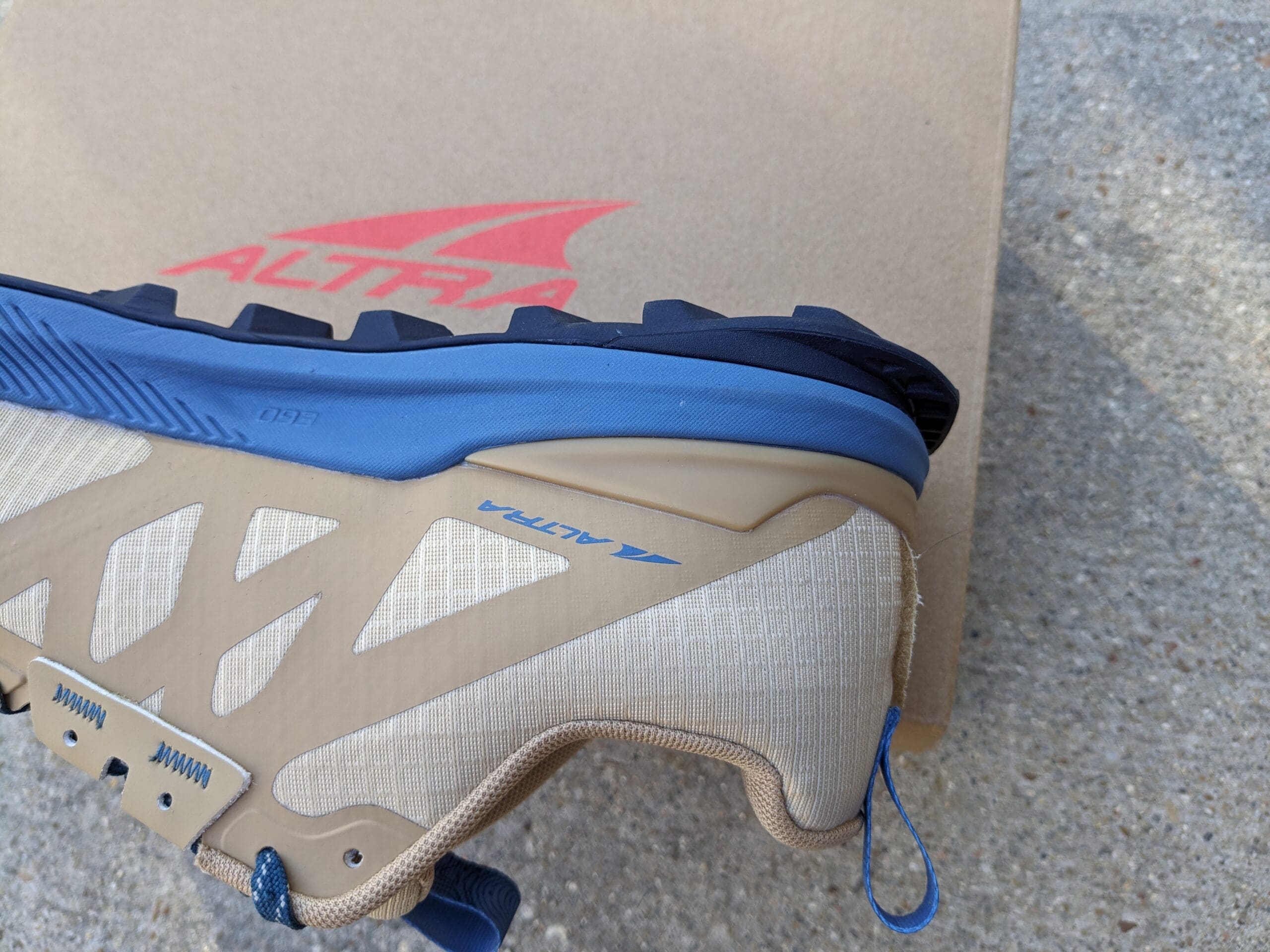
Another drawback to high stack heights is the tendency to roll ankles.
Because your foot is higher off the ground, there’s a higher point to roll from. When you step on uneven rocky surfaces, you’re more likely to roll an ankle in the Lone Peak. But the differences are minimal between the two.
So what’s the advantage of the 25mm Lone Peak?
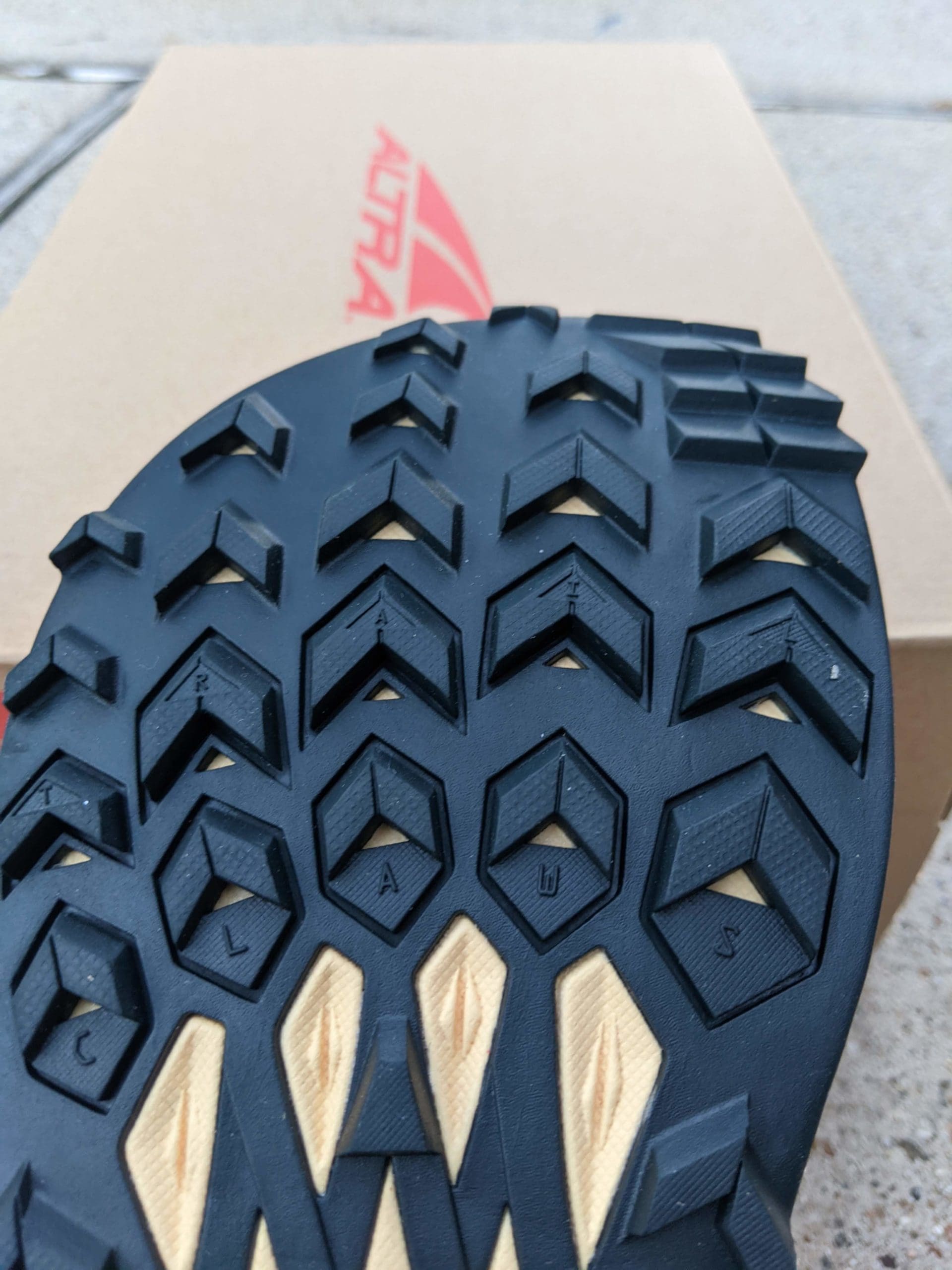
Some people find the extra cushion softer on their feet, especially when approaching Ultra distances or using the shoe as a long-distance hiker.
Because there’s more foam, the base is a little stiffer, and your foot rolls through your stride a little more, taking some of the stress off your feet and lower legs. But don’t be fooled; that stress has to go somewhere, often to the knees and hips.
It all depends on your body and foot strength.
Volume, Width, and sizing
With shoe sizing, we often have a number that we stick to. But how can a single number encompass all the differences in width, volume, and length that shoes can have? Well, it doesn’t.
Both shoes fit similarly in length, with the Superior allowing a few extra mm at the toes, but the differences come down to the width and depth.
Whereas both shoes have wide toe boxes, the midfoot area of the shoes is similar, but one feature changes that.
The overlays on the Lone Peak make the midfoot stiffer.

It creates a great lockdown but also puts pressure on the outside of your foot if you’re pushing up against the edge.
The Superior is a softer material, and any pressure is minimal as the upper is forgiving.
Lucky for us, there is a wide option in the Lone Peak, so if you do have any midfoot discomfort, opt for the wide sizings.
Lastly, both shoes have lost depth over the years, which is better for the mass market, but that’s hard to fathom for the die-hard fans.
I would now class the Superiors as a shallow shoe and the Lone Peaks as average-depth shoes.
Again, if you need more depth, switch out the insoles for something thinner.
Similarities
After identifying the differences between the shoes, let’s now focus on their similarities. In general, both shoes share a common theme. If you find one of them comfortable, the other will have a similar feel, with a few distinct characteristics.
Flexibility and Structure
Neither of these are minimal shoes. They both hold far too much cushion to be given that name, but in many other aspects, they are close to a barefoot feel, and that’s why they’re on this site in the first place!
You can flex the shoes in any which way you’d like. There’s a little resistance due to the amount of cushion, but no structural components inhibit the ability to utilize your foot naturally.
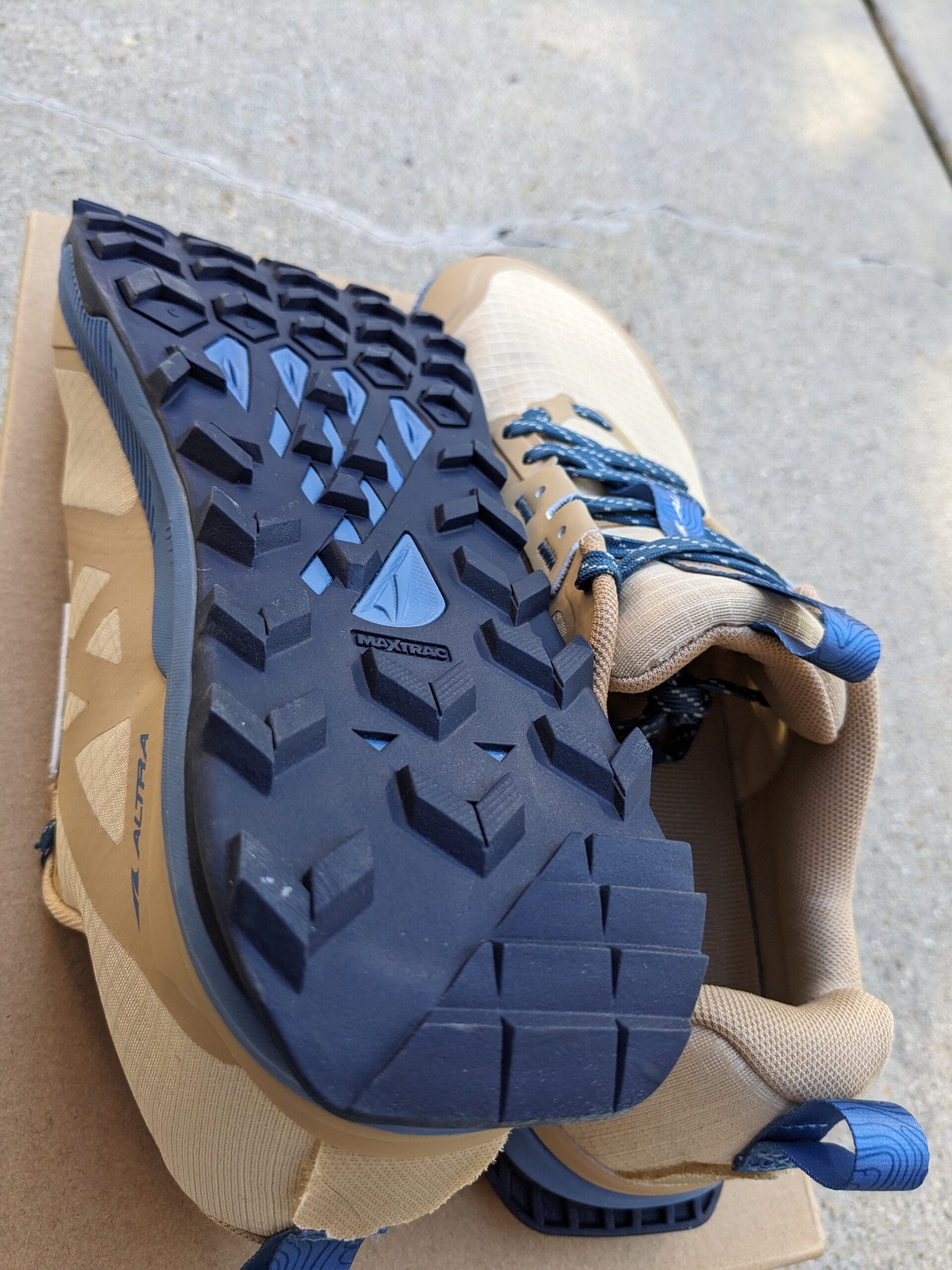
Looking to the heel, the Lone Peak now has some internal and external structure (please, there’s no need Altra!), but it doesn’t seem to affect the feel significantly.
And in the Superior, there’s almost no structure at all.
That means if you’re coming from a stable shoe like the Brooks Adrenaline or Hoka Stinson, then these may not be the Altras for you. Instead, I’d suggest looking at the Altra Olympus and the new Timp.
Outsole
In a side-by-side comparison, the Lone Peak and Superior appear to have very different outsoles. But in actual fact the performance is similar.
Both shoes use Altra MaxTrac rubber, which, as I mentioned previously, is much improved from previous versions of both shoes!
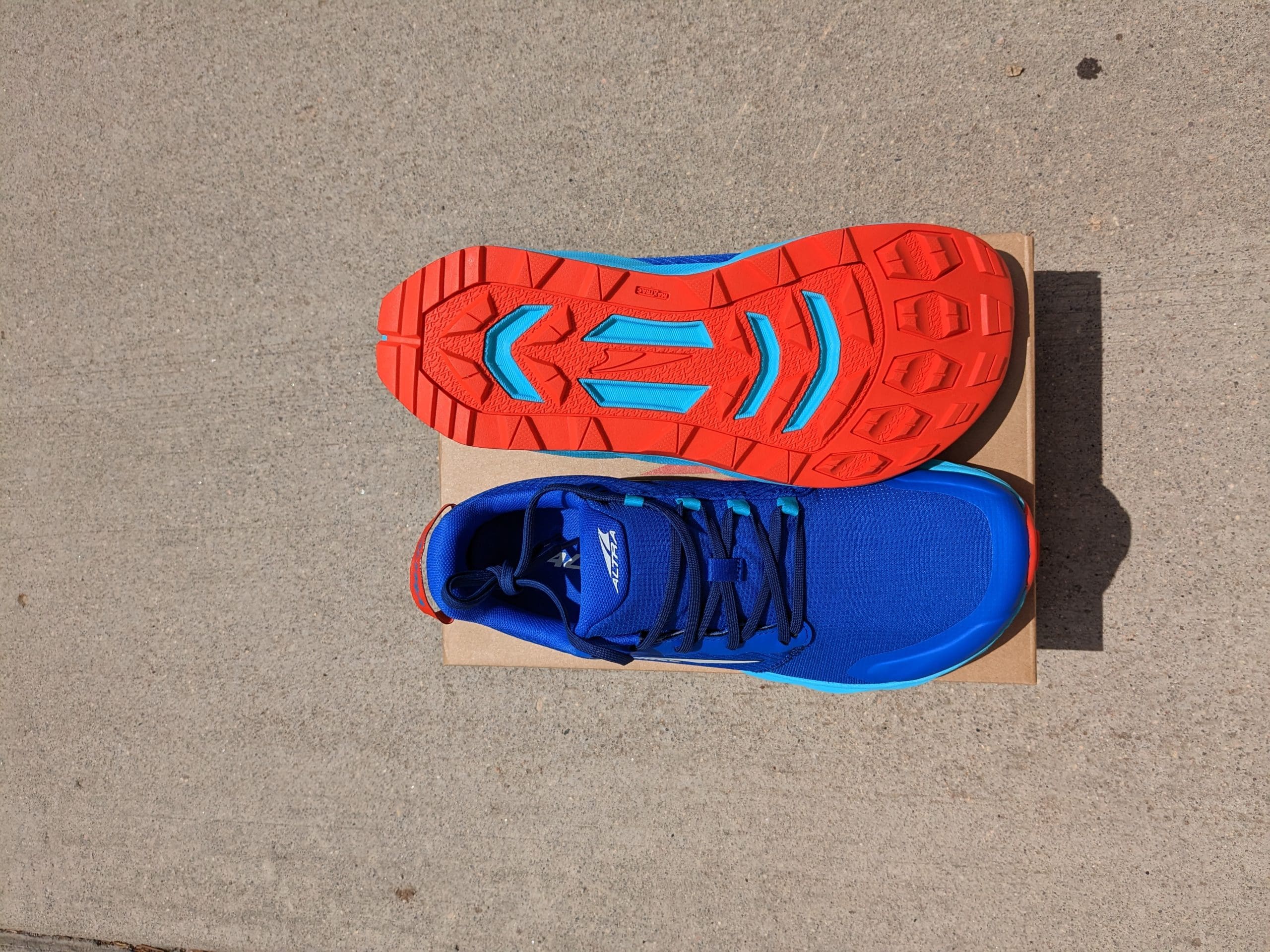
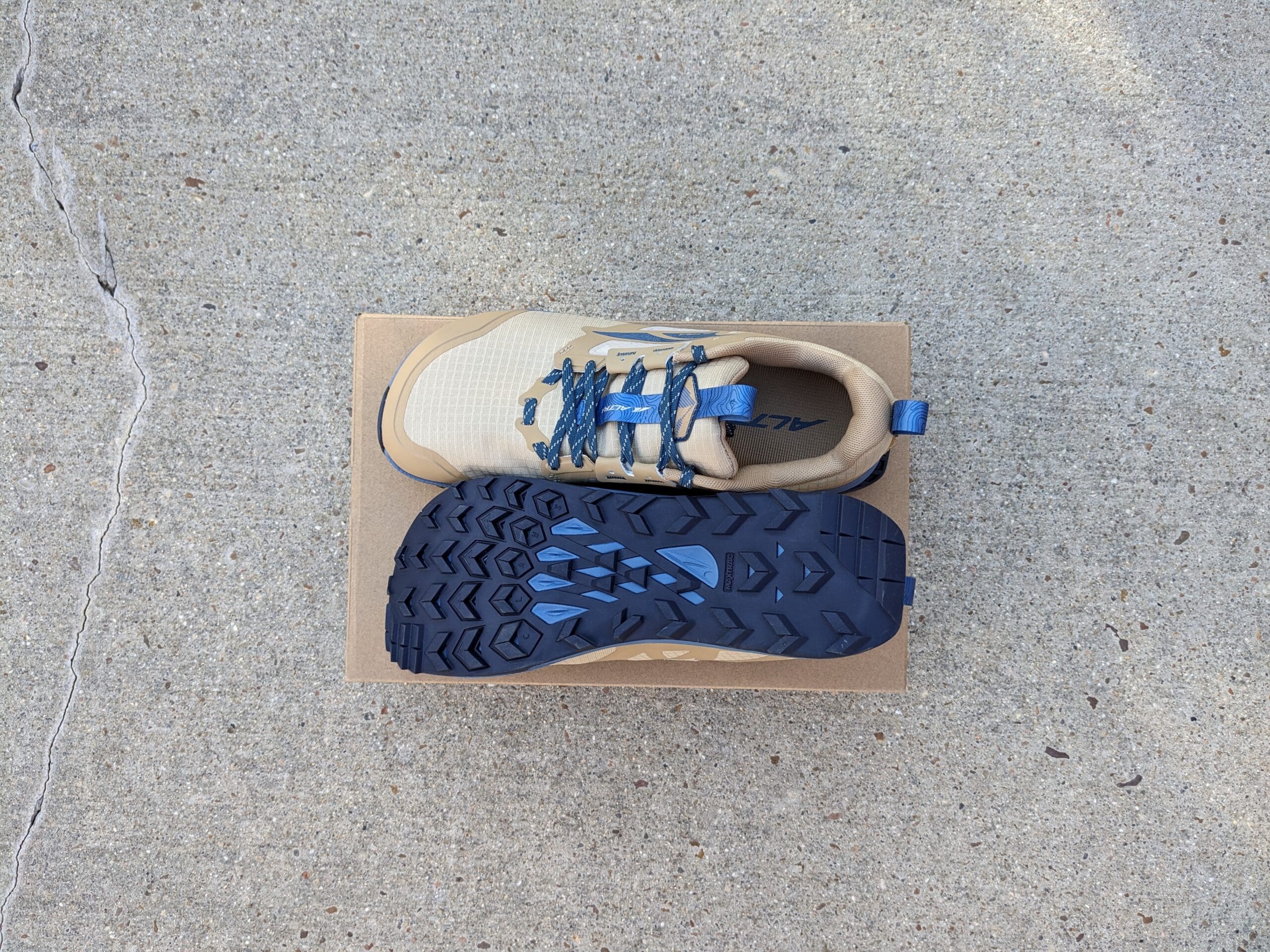
The lugs on the Lone Peaks are a little bit more aggressive with the chevron decision, but in the end, there’s still not much between the two. I wouldn’t take these into the bogs of the UK.
Both shoes will do perfectly for drier, rocky trails, mostly what you find in the American West and dry months in Europe. And, with the newly found grip on the dry rocks, I have much more confidence in Altra’s MaxTrac in the future.
Durability
Again, considering the shared DNA, the durability of the two shoes is likely very similar.
The same rubber.
A similar feeling midsole other than the stack height.
Protective toe boxes and overlays where needed.
I can’t say that much of either shoe will break down fast.
So, if I were to guess, it would be the rubber. You’ll lose the grip first.
And because the same rubber is used on both shoes, I think they’ll have the same lifespan!
Both the Altra Lone Peak, and Superior are Altra models that have stood the test of time, and they only continued to improve over the years. The fact that fans keep on returning to the models shows that they’re doing something right.
There’s a simple formula for choosing between the two shoes in order of importance.
And that’s it! Everything else is pretty minor!
Now, are you interested in how these two shoes change your gait? And how does that compare to the whole Altra trail running lineup? Will Altras naturally make you a forefoot striker?
I recently tested each shoe with the same gait analysis used in universities and found that, yes, indeed, shoes make a difference, even within the same brand!
Check out the “gait analysis” section in the Altra trail runners’ buying guide.


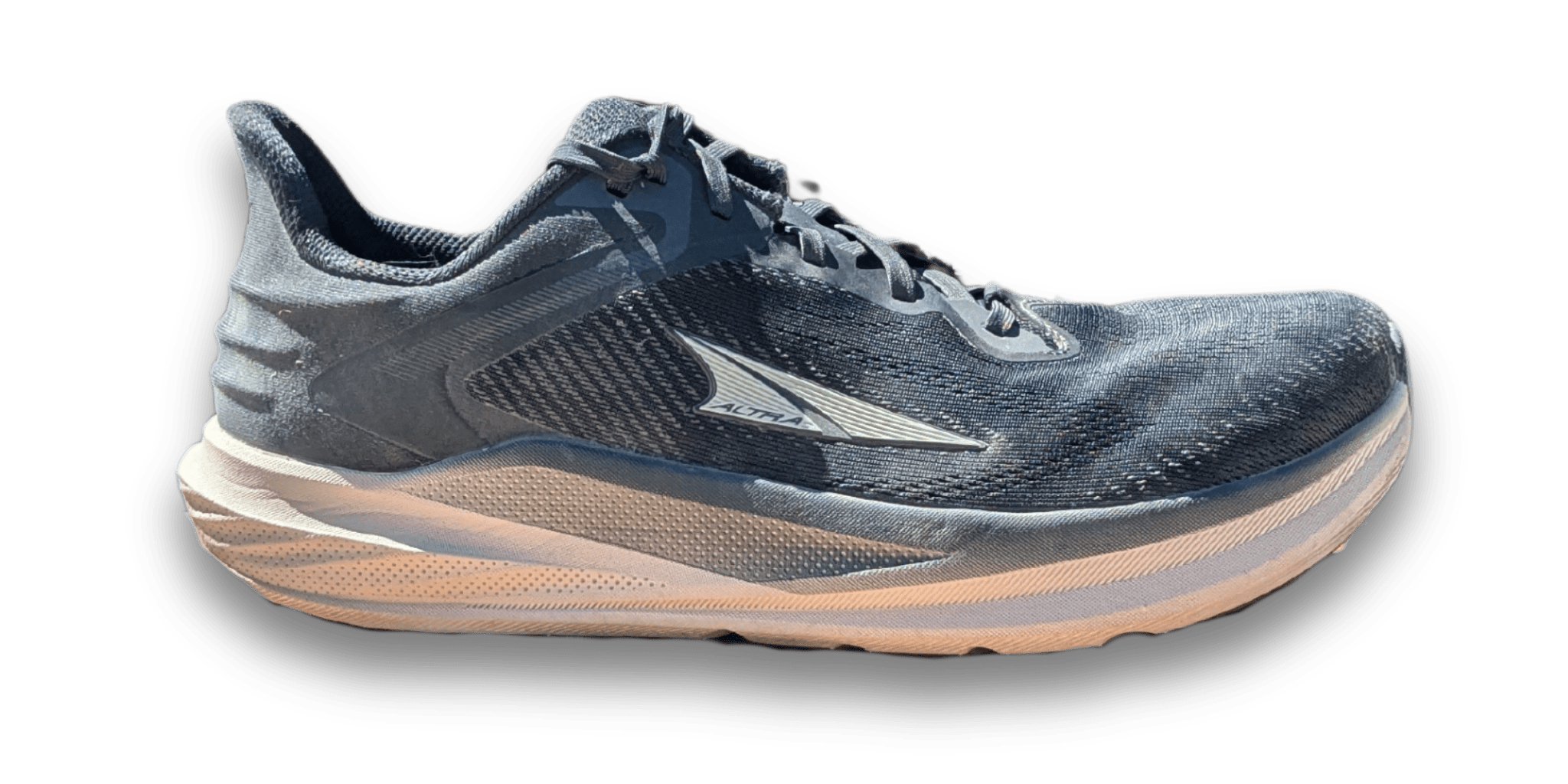
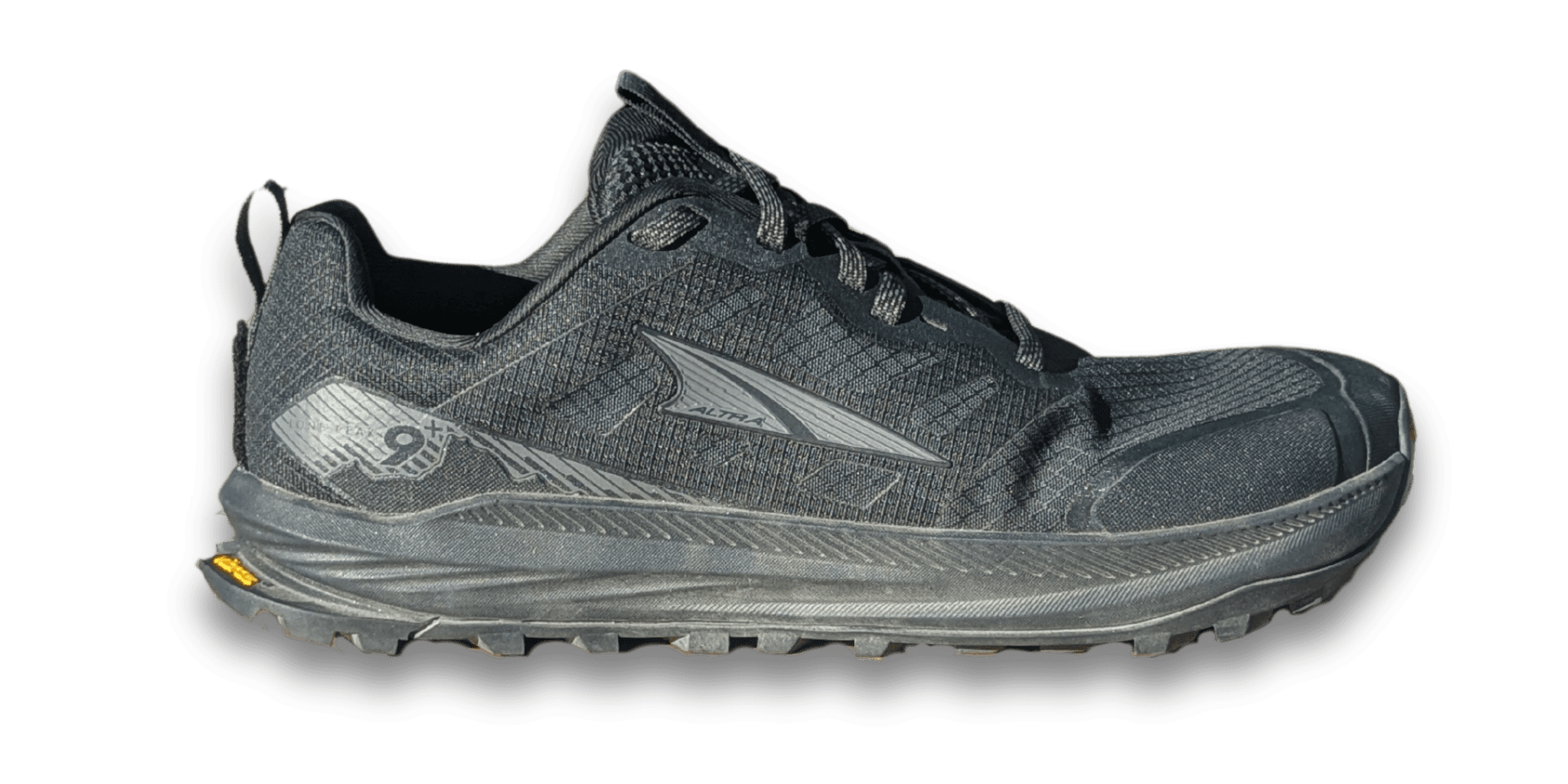



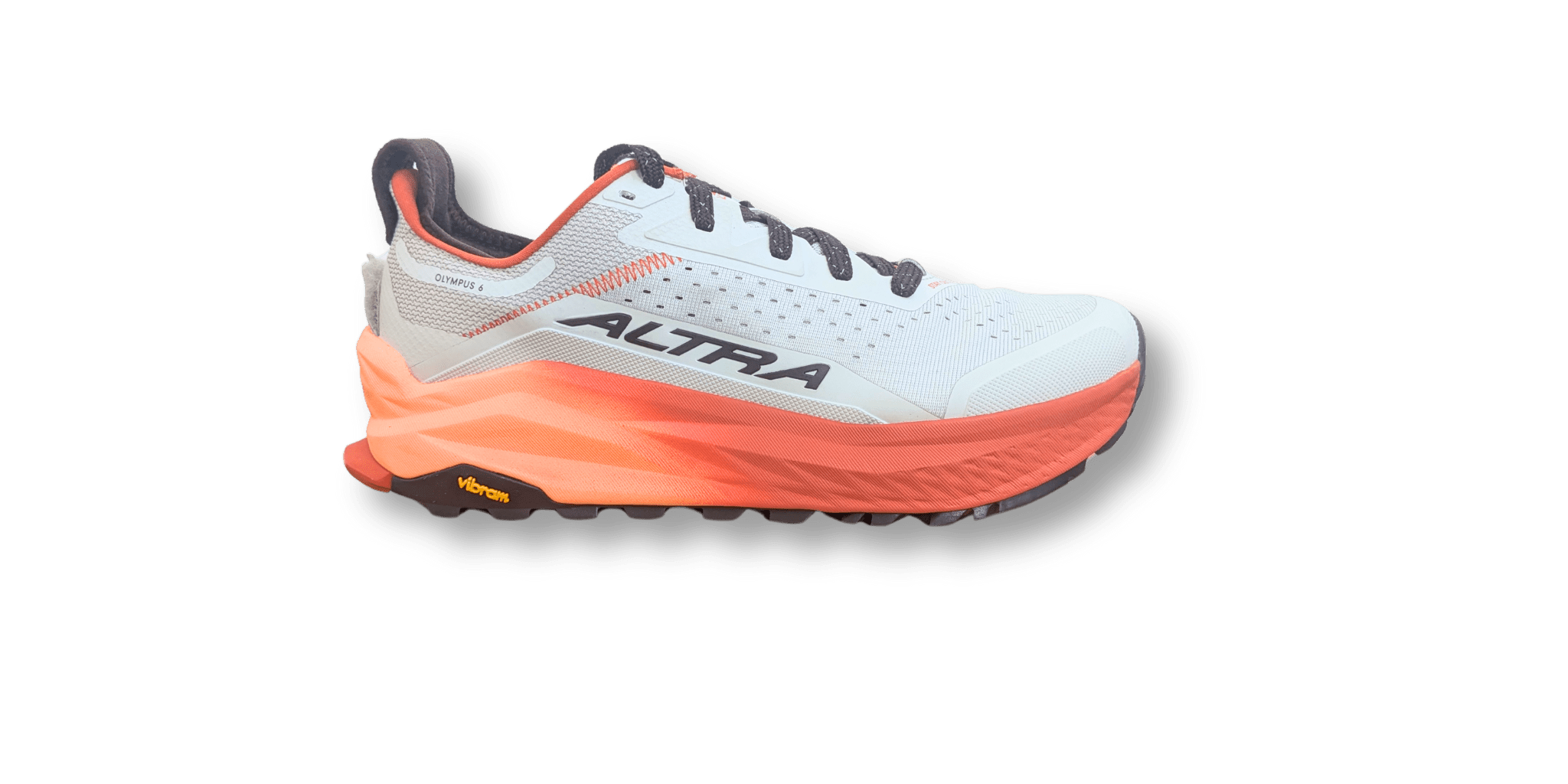
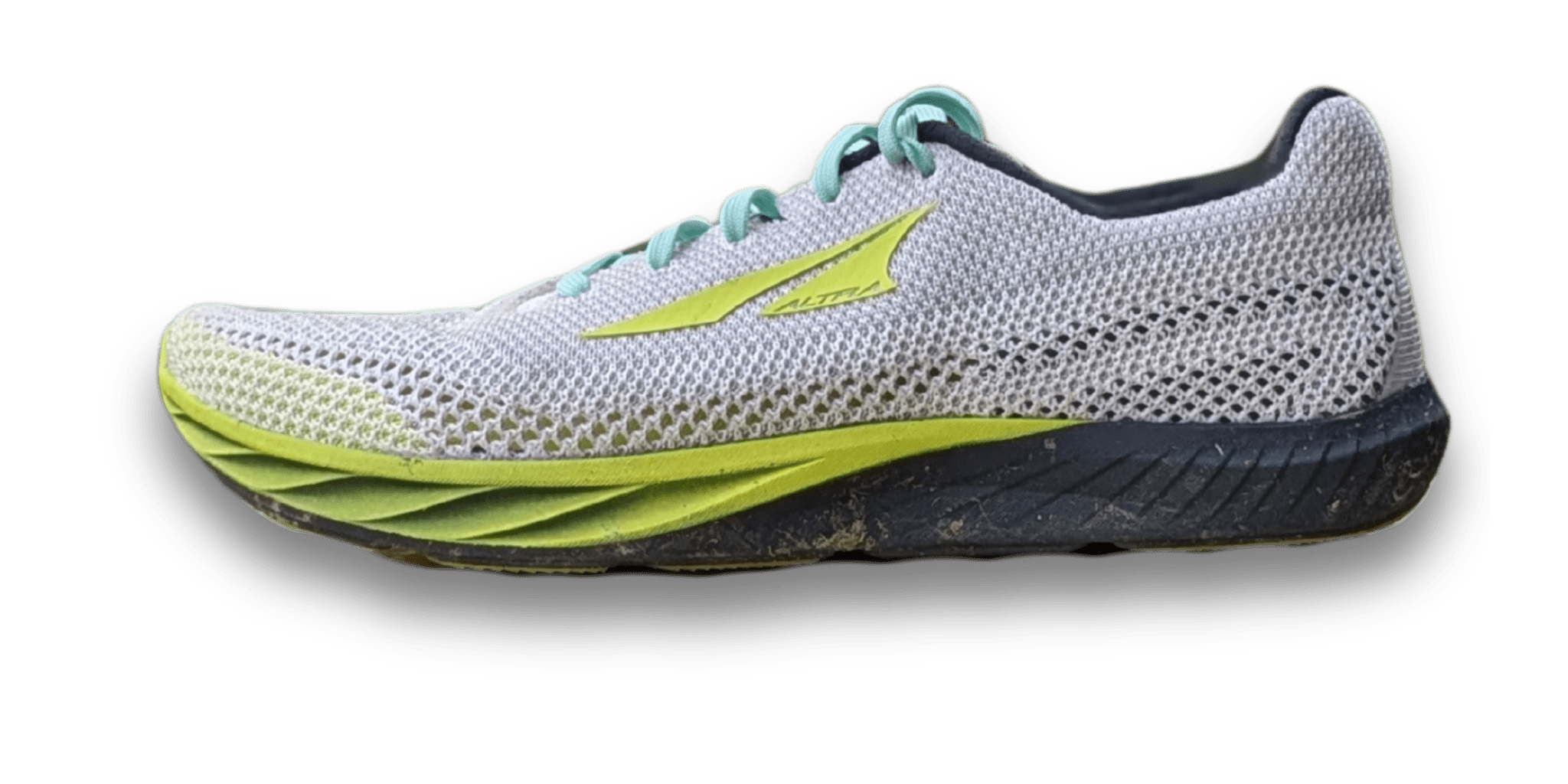
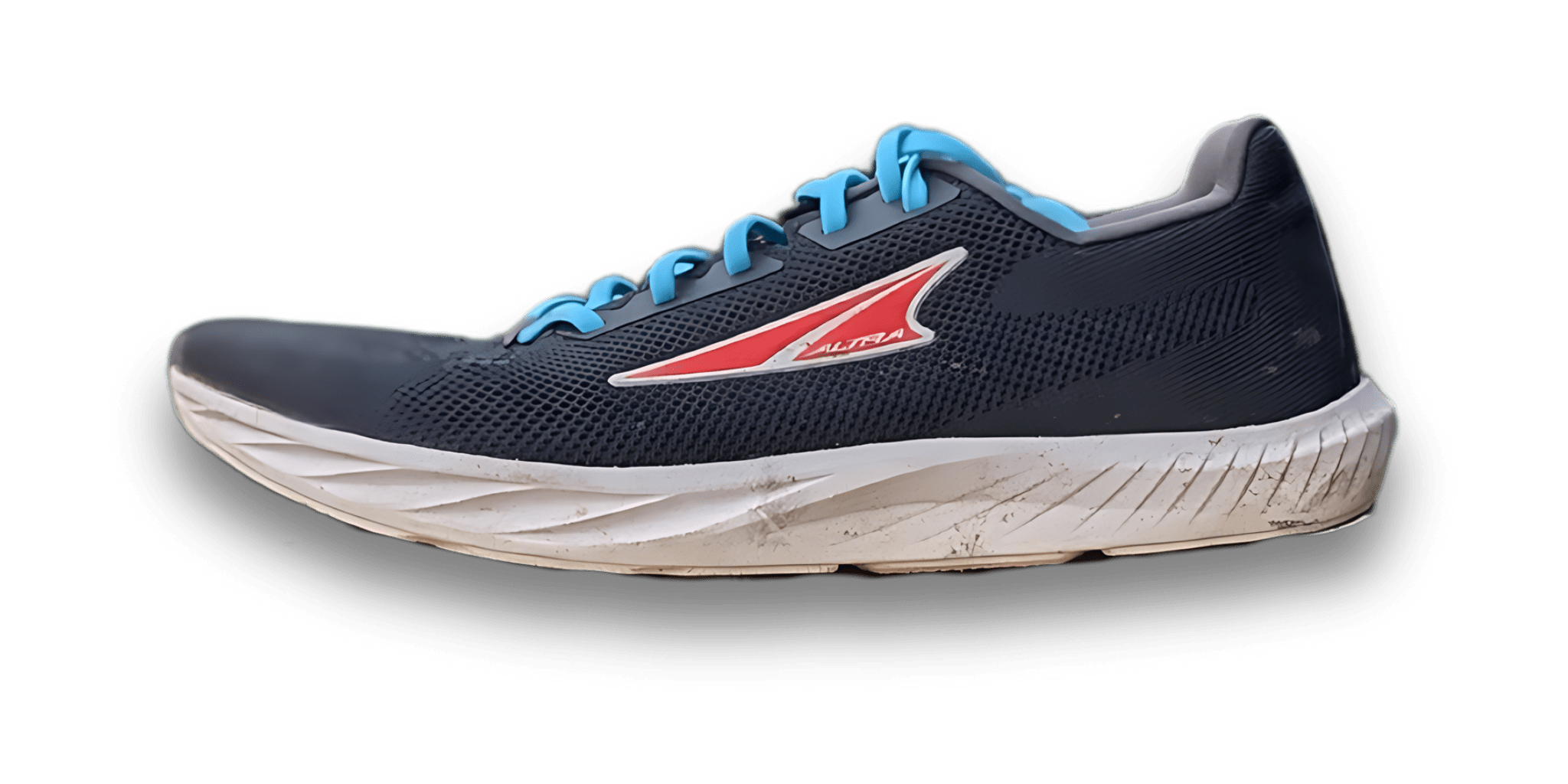
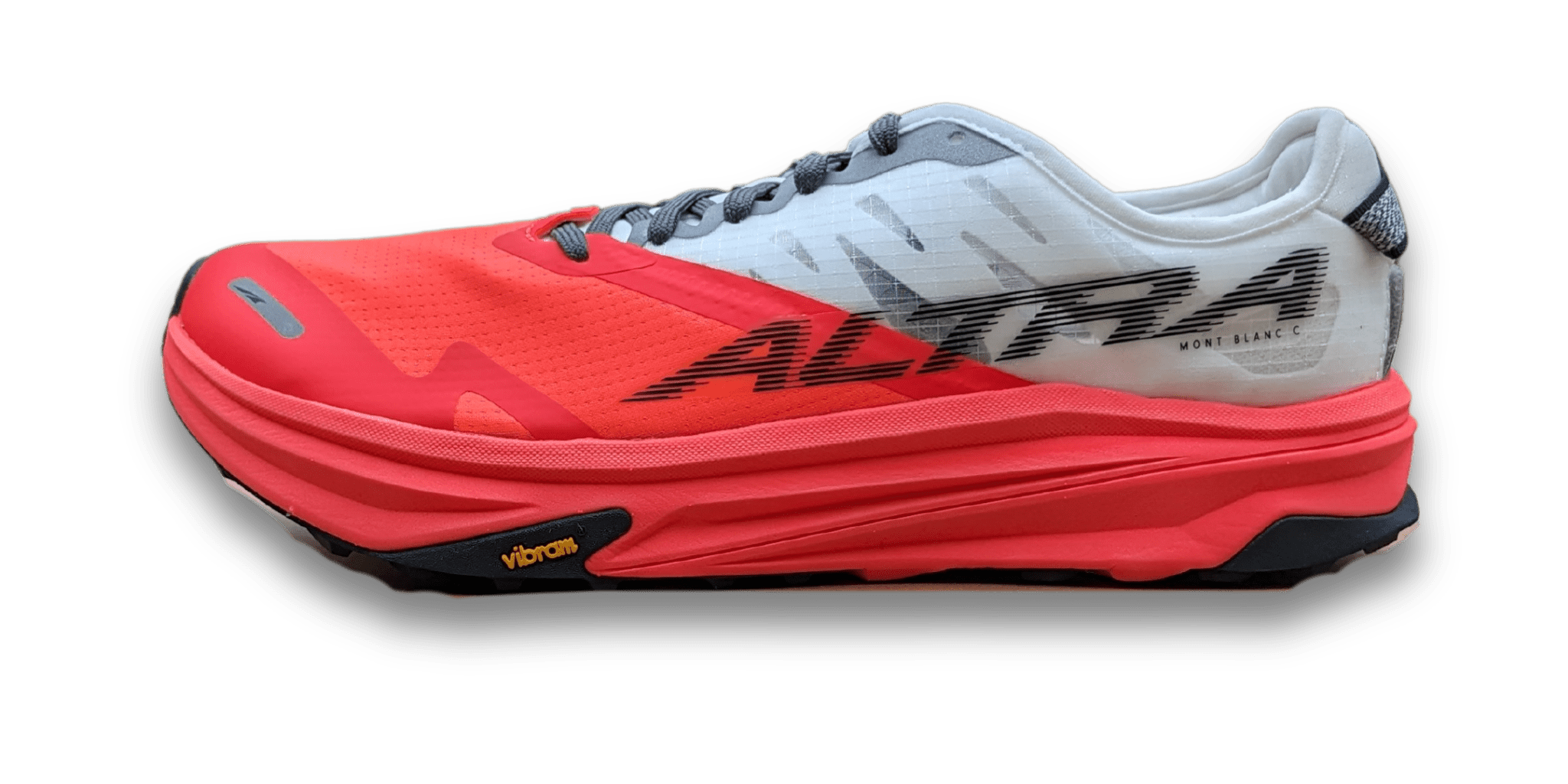

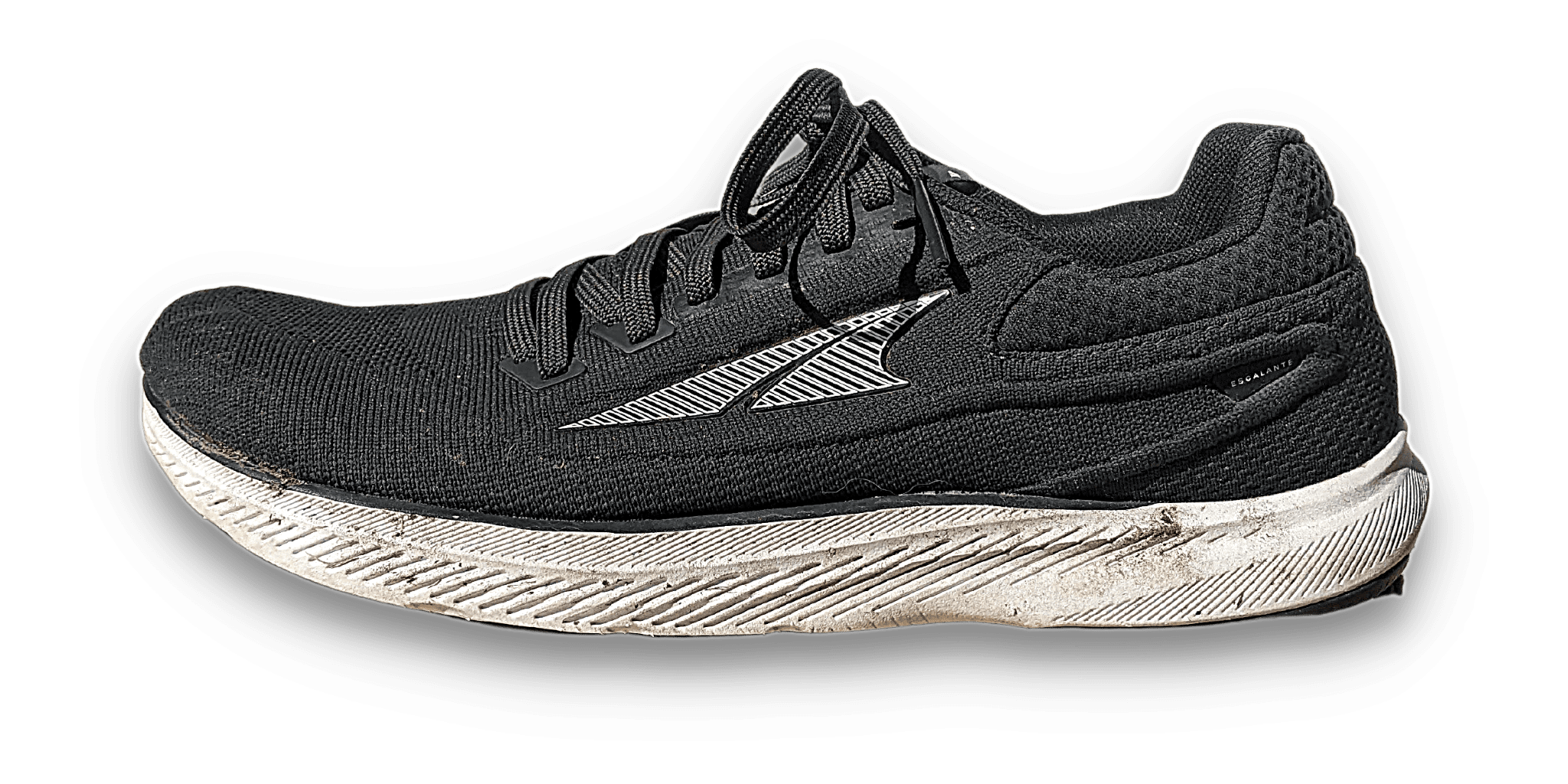
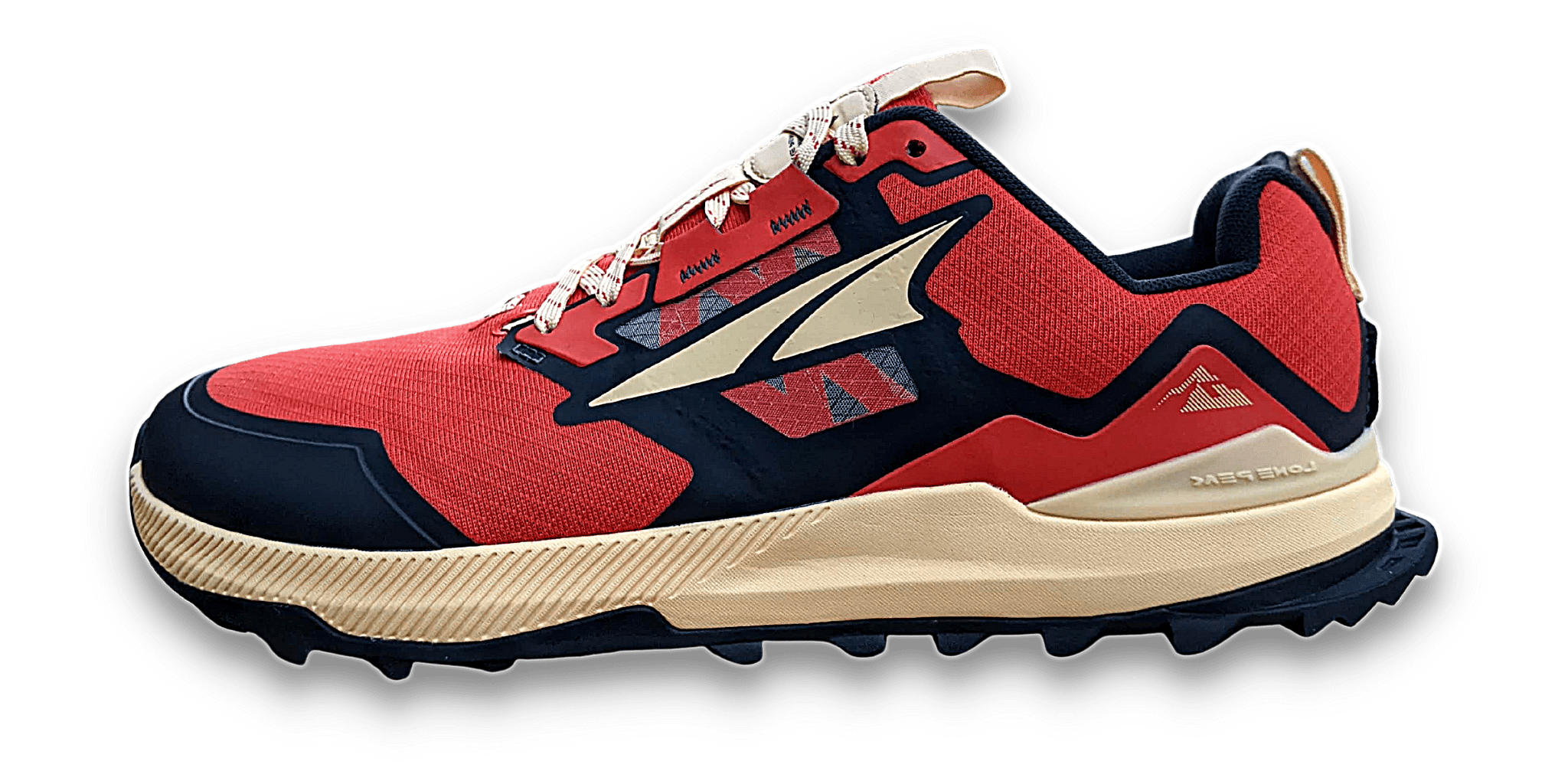




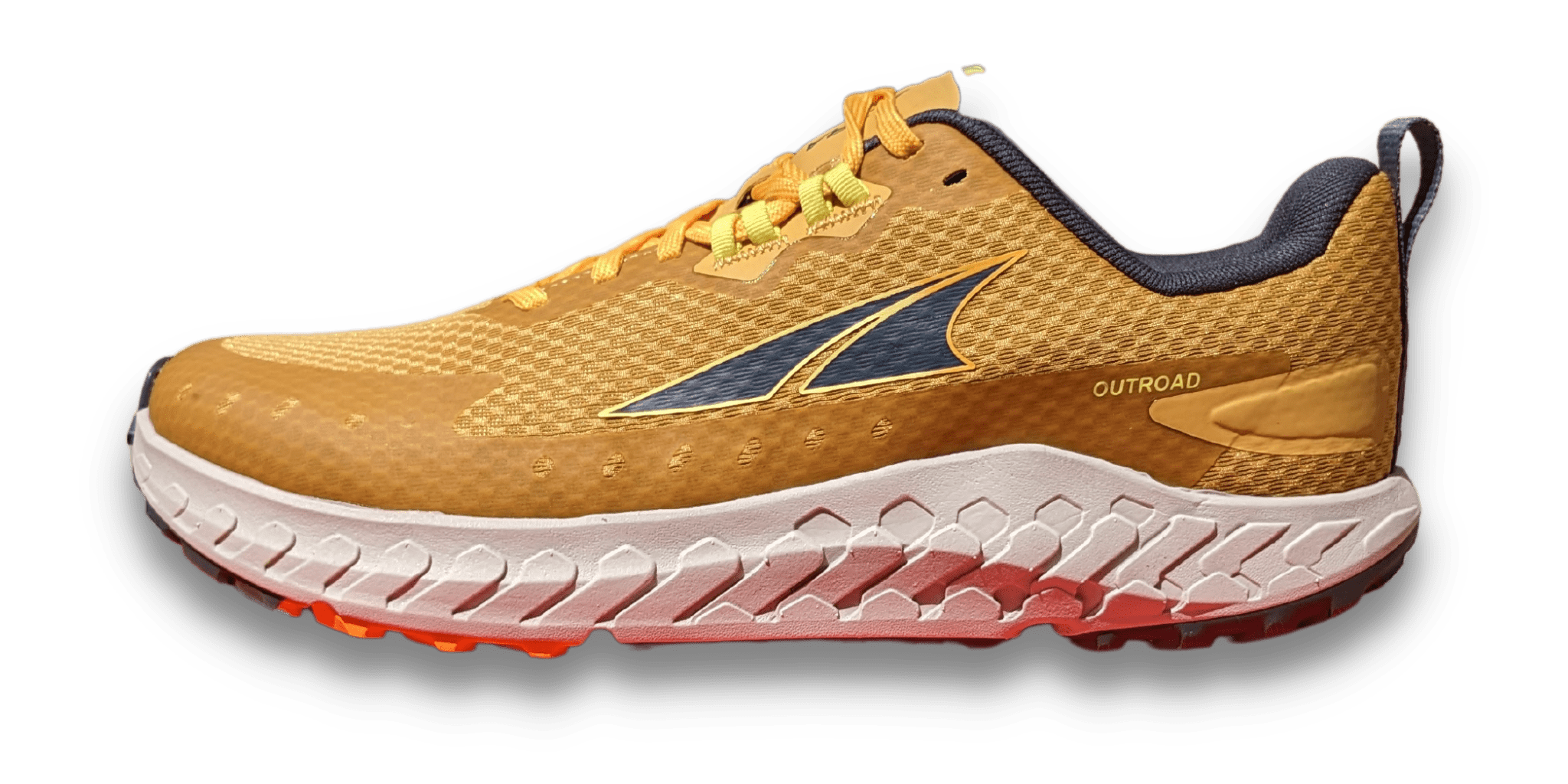
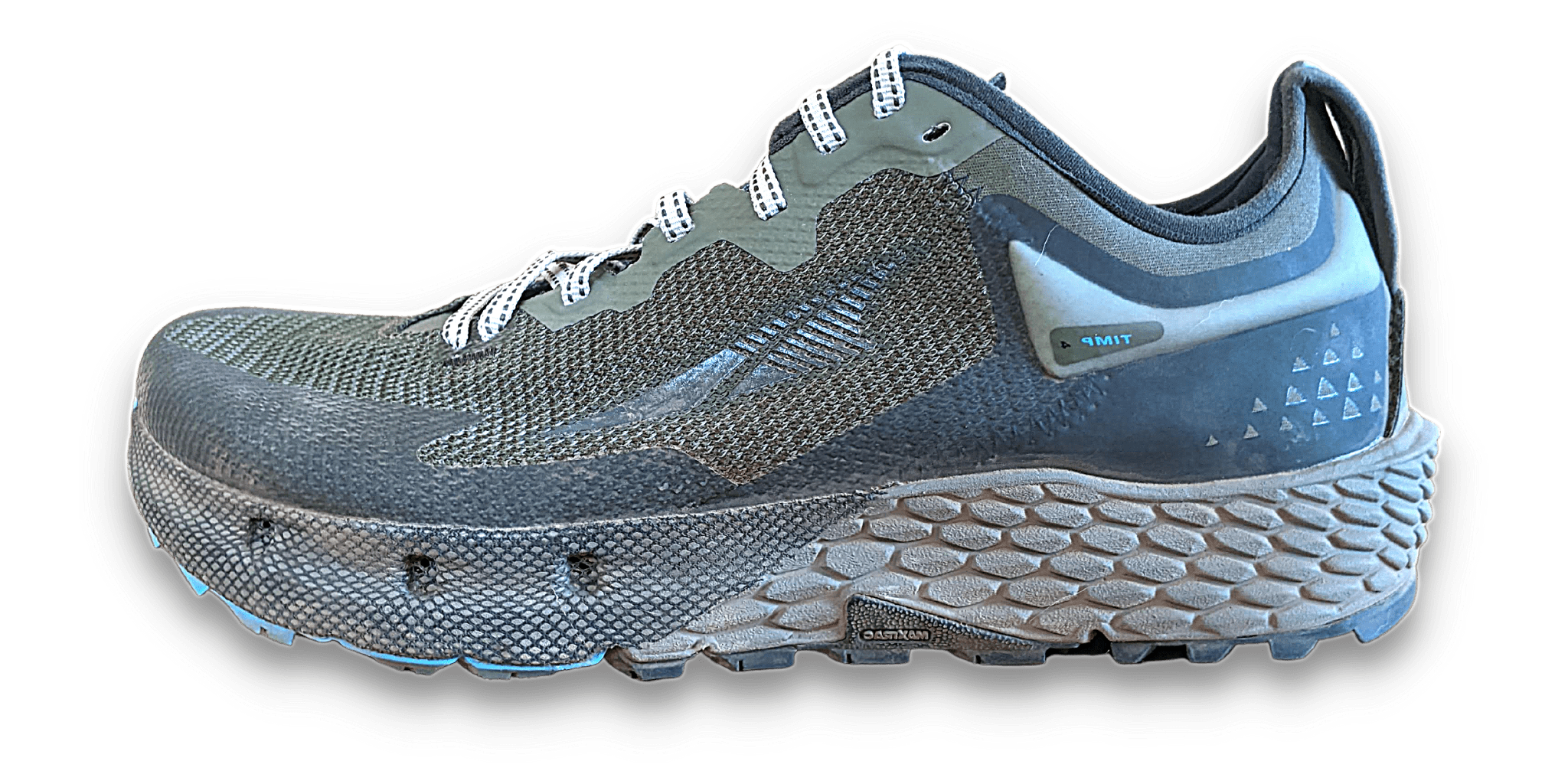
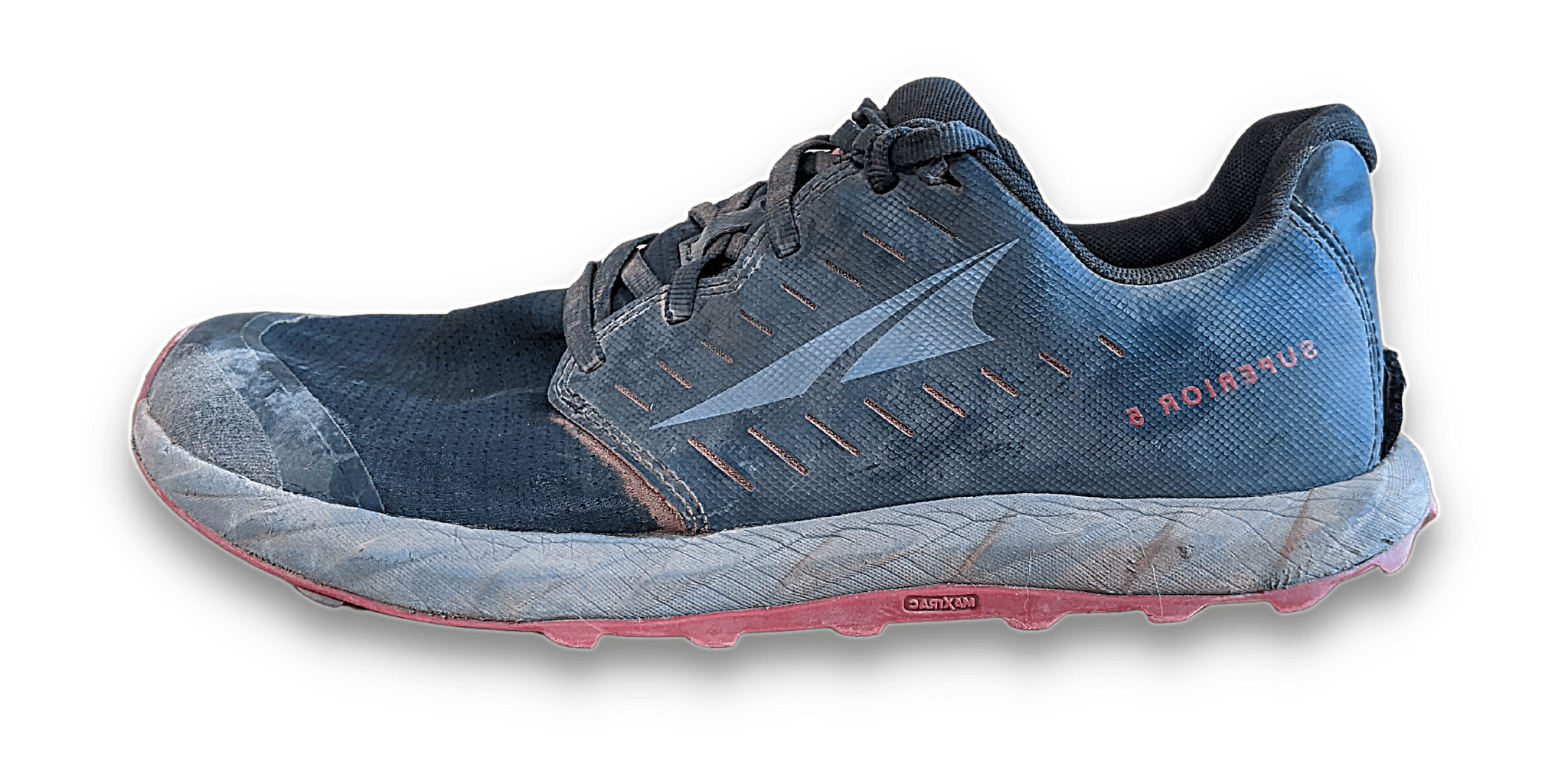
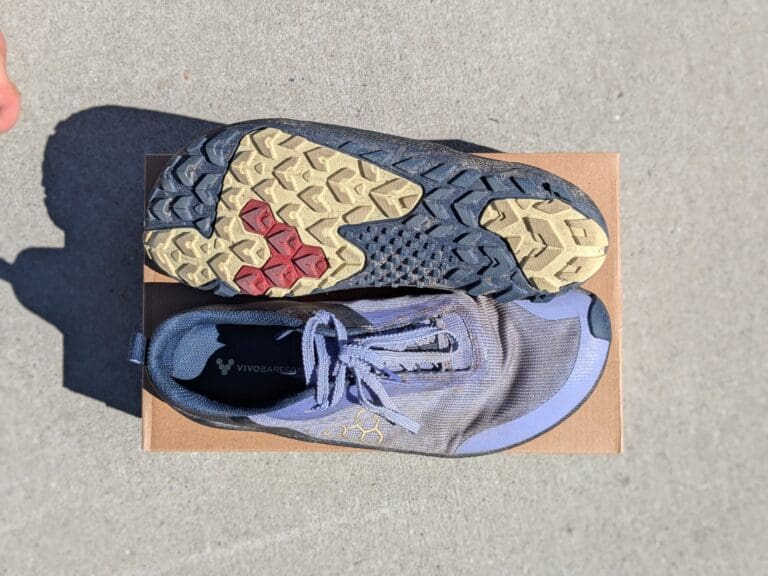

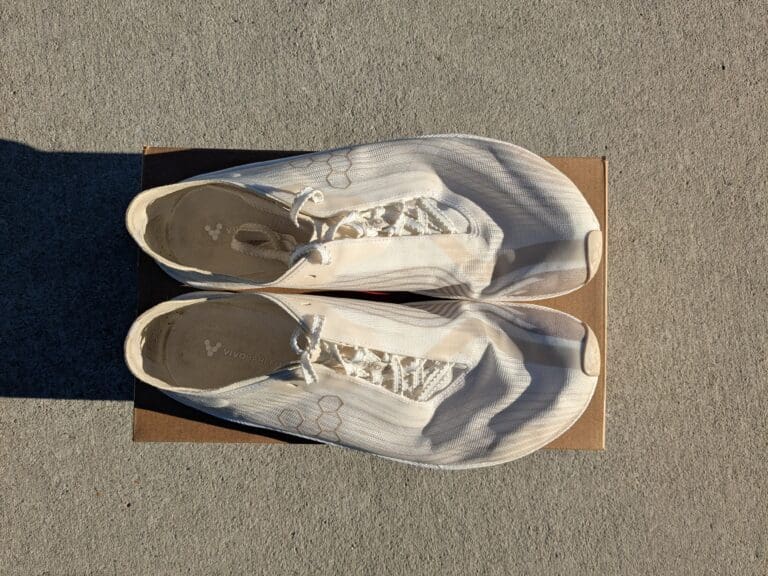
Hi Nick
Thanks a lot for these very detailed comparison.
Question for you : I am used to running with Escalante on soft gravel paths and forest path for the non rainy days, it works very well for a road shoe. Do you think that the ground feel of Escalante is similar as Superior one ? And does Superior offer more protection against rocks than Escalante. My question may be strange, but as i do not run in mountain, i would like to be sure than Superior would bring me a real benefit vs Escalante.
Thanks for your point of view.
BR
David
Which version of the Escalante do you have? If it’s the 3, you’ll find the Superior much more minimal. Other Escalantes will be similar, but still the Superior give more ground feel.
One option is using a stone guard (rock plate). They sell them on the Altra website.. They work surprisingly well, and still allows a minimal feeling.
The biggest difference will be the protection around the toes. The Superior 6 has a nice toe cap, which is great if you mistakenly kick a rock. There’s a little more protection around the midfoot too.
I hope that helps! Thanks
Thanks Nick for your reply.
I have currently the Escalante 4, and I have to say I have been suprising by its capability for running on path in comparison to the V2. As far as I understand your comment, not sure Superior brings me a lot for simple path vs Escalante, except a little bit more protection around the toes.
I run also in Trailtalon 235, and what would be great would be a shoe which hangs the ground like it but with the confort of the Escalante (every sharp rocks are very felt with the Trailtalon).
Thanks.